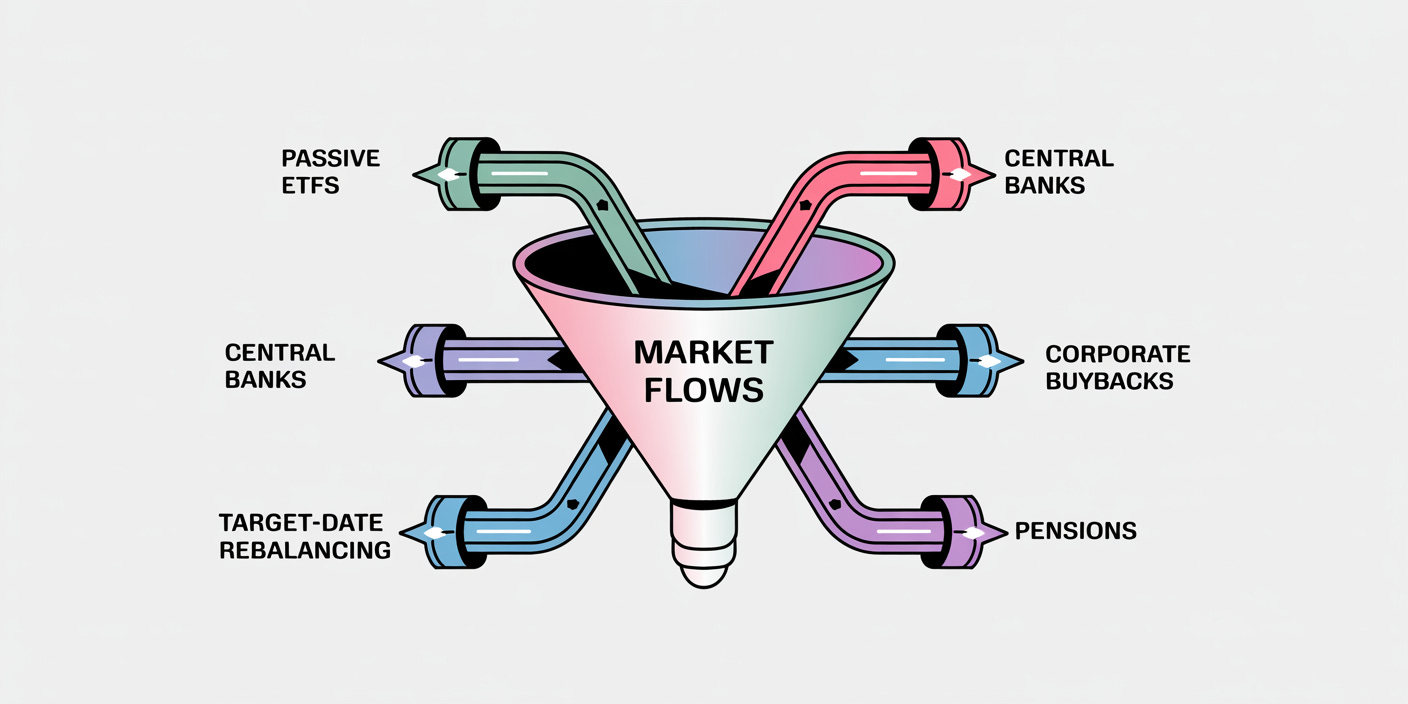Beginner’s Guide to Price-Insensitive Flows
Price-insensitive flows are when stocks are being bought regardless of price.
Imagine a buyer who must purchase a stock regardless of whether it’s trading at $50 or $150 per share. This insensitivity to price creates a steady demand that can push stocks higher, often independent of economic fundamentals like earnings growth.
They follow mechanical rules, not opinions.
Key Examples
Price-insensitive flows come from various corners of the financial ecosystem. Here are some of the most prominent examples:
Corporate Share Buybacks: Companies repurchase their own stock using free cash flow or borrowed funds, often regardless of share price, to return capital to shareholders and offset dilution from employee stock programs. It’s like a company saying, “We’ll buy our stock no matter what”.
Many buybacks are executed by computers that buy a preset amount daily.
Passive Investment Inflows: These flows are mostly from retirement accounts and other pension contributions. For example, when you put money in a 401(k), it buys shares of big companies (e.g., Apple or Nvidia) without caring if they’re expensive.
These happen on:
month-end
quarter-end
semi-annual windows
Regardless of price.
Central Bank Interventions: Actions like quantitative easing (QE), where central banks purchase assets to inject liquidity, often ignoring price levels.
How Price-Insensitive Flows Distort Market Valuations
These flows are pumping money into assets without scrutinizing whether they’re “cheap” or “expensive.” The result? Distorted valuations that can persist far longer than economic fundamentals might suggest, leading to bubbles, mispriced risks, and frustration for investors who rely on classic tools like the price-to-earnings (P/E) ratio.
Can They Reverse?
Reversals in price-insensitive flows almost always require a structural shock, not just a headline or a bad day in the market. Because these flows are mechanical—mandated by rules—they only reverse when the underlying conditions that feed them flip. Passive ETF flows weaken when liquidity dries up or when large 401(k)/pension contributions stop. Corporate buybacks stop when cash-flow conditions tighten. In short: these flows don’t reverse because “valuation is stretched”—they reverse when macro condition force the mechanical rules to change direction.


